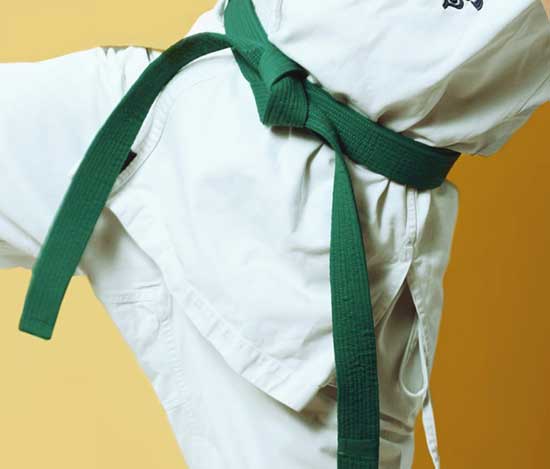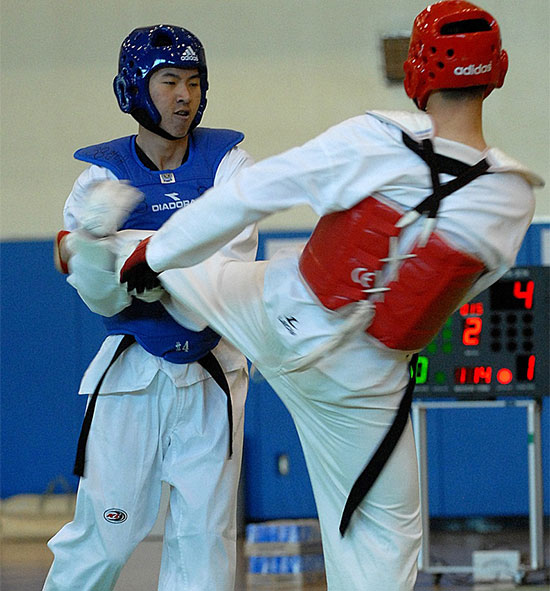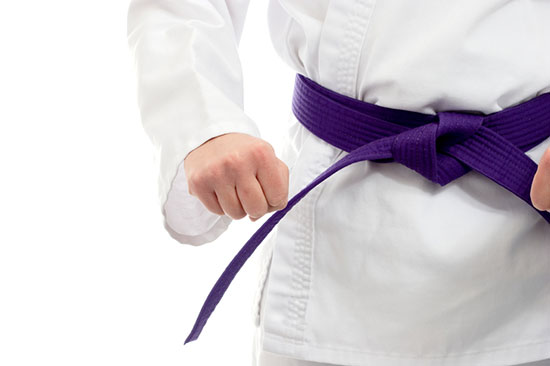Taekwondo is a martial art or combat sport famously known for its high and spinning kicks. It is derived from three Korean words: Tae’ kick’, Kwon’ fist or punch,’ and Do ‘the art of.’
Like other martial arts, it is built on discipline and revolves around hours of practice and outstanding dedication to learning the craft.
The art dates back to over 2,000 years ago when it was introduced as a self-defense mechanism. Taekwondo techniques have advanced since then and have been taught worldwide and even recognized as an Olympic sport in 2000.
The original use of Taekwondo was for self-defense against attacking kingdoms. However, the growth of martial arts has influenced its progression and is thus recognized as a sport and aerobic exercise.
The art has eight belts representing the different training levels and attainments you have had over the training. The belts include yellow, blue, red, red/black, Cho Dan Bo, black/white, and black belt. According to the level you attain, the stripe of your belt shows the level of attainment received.
Contents
Do junior belts in Taekwondo differ from the regular belt system?
The belt system in Taekwondo is significant in holing the level of knowledge every holder has. The belt system is divided into junior and senior groups, with the senior group encompassing a variety of black belt degrees.
The junior levels, also called geup, have around 10 levels and often vary between 8 and 12. This is determined by the governing organization leading the training of the junior group.
Black belts are also divided into ranks, referred to as dan or degrees. A title-based system records each stage and determines the level you are in. the black belt is only awarded to a minimum of 15 years of age.
The junior black belt is different from the adult black belt as it is referred to as the poom rank. Younger children cannot pass the black belt or dan exams; thus, they are awarded poom rank, usually red and black in color.
After the trainee attains the age of 15, they are awarded a regular level and have to work their way up the ranks for the black belt title.
Therefore the poom rank or junior black belt is not the same as an adult black belt as it requires training o rise upon the ranks to care for the techniques.
How many belts are there in junior Taekwondo?
There are ten belt ascending groups, each holding a different color that symbolizes the stage. At the junior level, the student’s progress is often marked by the attainment of colored belts.
The beginner is a white belt, while the highest is black. Each level is referred to as a kup and is named in an ascending manner in each junior section.
The 10th kup is the white belt that signifies the beginner’s innocence and Taekwondo’s innocence. 9th kup is the yellow strip and is the middle trip between white and yellow.
The 8th kup is the yellow belt representing the earth; it is symbolic of a planned seed where the plant takes its roots and sprouts.
This is where the foundations of Taekwondo are laid. The 7th kup is the middle phase between the yellow and green and is represented by a yellow belt with a green stripe.
The 6th kup is characterized by the green belt, symbolic of a planted seed set to mature, like the plant itself, the skills of the taekwondo student’s continuous growth in skills.
The 5th kup is represented by the green belt with a blue stripe, a middle phase. 4th kup is represented by the blue belt, which means a divine direction from heaven above where the plant grows. 3rd kup is the blue belt with a red stripe.
The 2nd kup is the red belt signifying danger or a warning that the student can damage themselves and others with the skills learned. The 1st kup, representing the highest level in junior levels, is the red belt with black stripes.
What is the order of belts in Taekwondo for kids?
The order is followed from the 10th kup to the 1st kup. After commencing training and passing through the mentioned levels, this is awarded to the participant.
The color on the belts are meaningful and define each stage the participant joins in. therefore, it is essential for monitoring progress.
The belt ranking system is vehemently followed, and the awarding is done according to merit at each level.
The ten stories in the junior stage show commitment and proficiency o learning the art and allow further learning.
Following the order from 10th to 1st is essential to understanding what the different stages symbolize and their impact on the student.
How long does it take to get each junior belt in Taekwondo?
Taekwondo schools vary across different parts and are rooted in different instructors and curriculums that are essential to their growth.
Generally, in other taekwondo schools, tests are given every three to four months with a minimum of 50 training hours.
However, traditional schools take longer intervals before testing their students, which can last six months.
Therefore, you will notice that as the levels continue to advance, so do the periods become even longer.
Rising through the ranks can take time as they require understanding the different structures and patterns in Taekwondo and its theories.
Vital information, including rules of the sport and taekwondo knowledge, is essential and keeps advancing according to the level.
Therefore, completing the ten kups may take up to 3 or four years. Despite the different curriculums used in the schools, these levels rely on individual ability at all times to learn and the quality of teaching you receive.
In South Korea, some schools offer intense training programs before the national committee carries out testing.
Knowledge of Taekwondo is accessible through programs and councils worldwide that continue to promote the art and encourage its growth.
Final thoughts
There is no doubt that Taekwondo has profoundly impacted the many children who pick it up globally.
The embracing of the art through intense programs provided has led to the growth of participation and membership, which also continues to increase.
Through the different levels in the junior segments, children below the age of 15 are given an opportunity to engage in the art early enough to learn the history and background that influences their daily lives.
Taekwondo is an excellent mental and physical health booster, thus putting the children in the right spot.
The belt system follows a particular order which shows the art’s deep intentionality to impact and nurture children at such a young age. This is among other advantages like self-defense.






